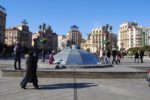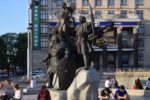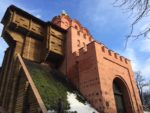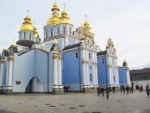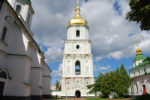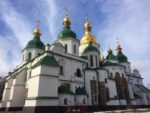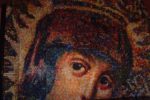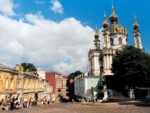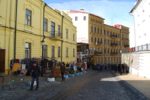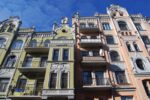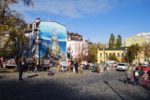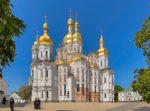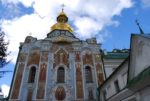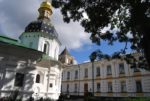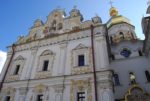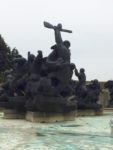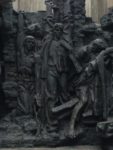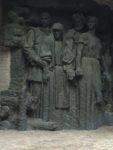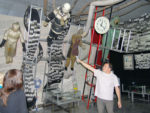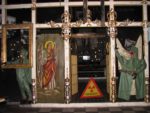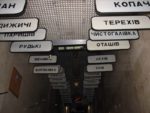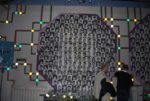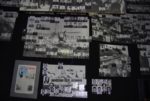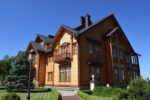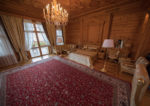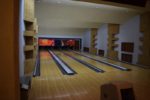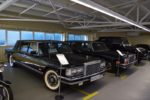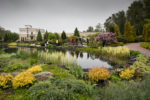Cosmopolitan Kyiv: A Travel Guide to Ukraine’s Dynamic City on the Dnipro
Kyiv — the capital of Ukraine and the mother city of all Eastern Slavic peoples — is one of Europe’s most underrated travel gems. Despite decades of struggle from wars, loss, and political turmoil, Kyiv has reemerged as an exciting, eclectic cityscape that displays a proudly independent culture distinct from its post-Soviet counterparts.

Today a modern hub of three million, this intriguing destination is a heady mix of ancient monasteries, monumental Soviet architecture, up-to-the-minute cafes and bars, and numerous art galleries and workshops — all bursting with positively palpable energy. There’s something for everyone to explore, whether you want to dive into the city’s unique and colorful history or revel in its lively artistic scene.

Here are some of our favorite ways to explore Ukraine’s exciting and engaging cultural capital.
Get an Introduction to Kyiv at Independence Square
Independence Square, Kyiv’s central square on Khreshchatyk Street, is filled with fountains and glass domes. Known as the Maidan, this open and welcoming plaza is the city’s most popular gathering point, where people come to stroll, enjoy the nightly fountain show, and catch outdoor weekend concerts.
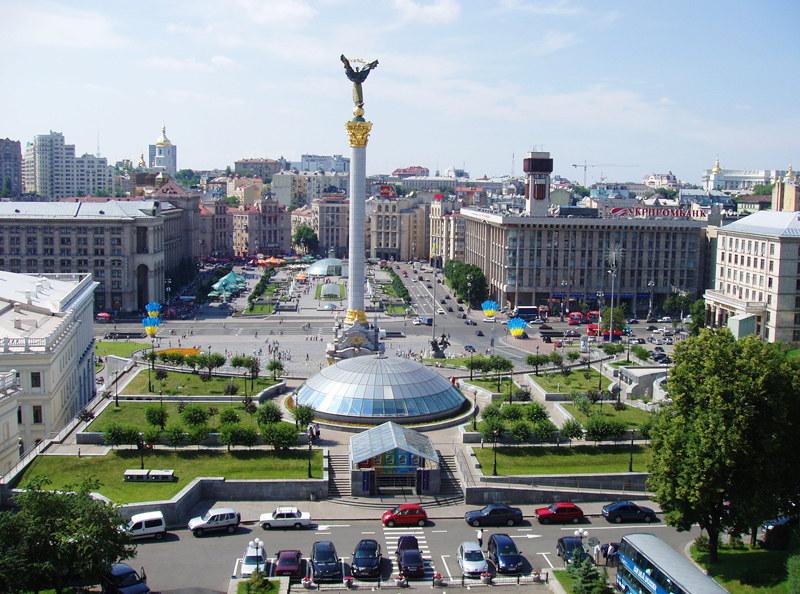
In recent years, Maidan has been the scene of not only festive but feisty Ukrainian events, including the pro-independence protests of the early 1990s and the Orange Revolution in 2004. In February 2014, thousands of people camped and demonstrated here to protest then-president Yanukovych’s decision to strengthen ties with Russia instead of the EU. The protesters successfully unseated Yanukovych and restored the Constitution of Ukraine in what is now called the “Euromaidan,” or “Revolution of Dignity.”
(click image to view larger photo)
Despite the ever-present reminders of revolution, Maidan’s atmosphere remains celebratory and convivial, and the square is almost always busy with pedestrians, street vendors, and performers, particularly on weekends.
Stroll the Cool Shops Along Kreshchatyk Street
From the square, take in the main street of the city, Khreshchatyk, which is lined with neoclassical public buildings, cafés, and lots of upscale shopping. On weekends and holidays, Khreshchatyk is closed to traffic and becomes a pedestrian thoroughfare, dedicated to shopping, strolling, and people-watching.

Check out some of the huge underground malls teeming with high-tech shops, or the classic TsUM department store filled with some of the finest designer goods in the city. Or stand in line with the locals for a sampling of the famous perepichka — a savory Ukrainian sausage wrapped in deep-fried dough — from the beloved Kyivska Perepichka kiosk on the corner of Kreshchatyk and Khmelnytskoho.

Hit the Highlights in Kyiv’s Old Town
Brimming with beautifully reconstructed churches and glittering golden domes, Kyiv’s Old Town, also known as the Upper Town, is where Eastern Slavic civilization all began. The great medieval empire of Kyivan Rus was established here in the 9th century, which eventually spread and became the cultural cradle for three modern-day nations — Russia, Belarus, and Ukraine.
Today, this swath of Kyiv’s central core contains some of the oldest and most important landmarks in the city, and you could easily spend a full day here admiring ancient ruins and gracious baroque architecture.
(click image to view larger photo)
If you want to hit the Old Town’s highlights, first visit the Golden Gate (Zoloti Vorota), one of the only remaining city gates of ancient Kyiv. From there, step inside Kyiv’s oldest church, UNESCO-listed St. Sophia’s Cathedral, with its striking original frescoes and mosaics from the early 11th century. Then walk down to brilliant blue St. Michael’s Monastery, named after the patron saint of Kiev.
Amble Around Andreyevsky Uzviz & Posh Podil
Andreyevsky Uzviz (or Andrew’s Descent) is a small, winding cobblestone street lending lots of charm and character to the city. The history of the street goes back 2,000 years, and formed the shortest route between the aristocratic Upper Town and the old tradesmen’s quarter, Podil. During the 19th century, this part of town was proudly dominated by some of the city’s most prominent artists and writers.

The area still retains its old bohemian vibe, and is a wonderful place to stroll and shop. The main street is filled with galleries, gift shops, restaurants, cafés, and artists’ co-ops and studios, while down in Podil you can find some of the trendiest boutiques, restaurants, and cocktail bars Kyiv has to offer.
(click image to view larger photo)
Be sure to make time for photo ops at the blue-domed St. Andrew’s Church near the top of the descent. It’s said to have been founded on the spot where Andrew the Apostle planted a cross and foretold the building of a great Christian city. Designed in the baroque style by architect Bartolomeo Rastrelli, the 18th century church offers spectacular views of Podil and the Dnipro River.

Marvel at the Monastery of the Caves
The UNESCO-listed Kyivo-Pecherskaya Lavra, or Monastery of the Caves, was Kyivan Rus’ first monastery, founded in 1051. The monks dug caves and underground labyrinths, living and studying in them, and their mummified bodies still line the walls. Here the historian-monk Nestor compiled much of the earliest known history of the Slavs, The Tale of Bygone Days, and passed on the crafts of icon-painting and building.
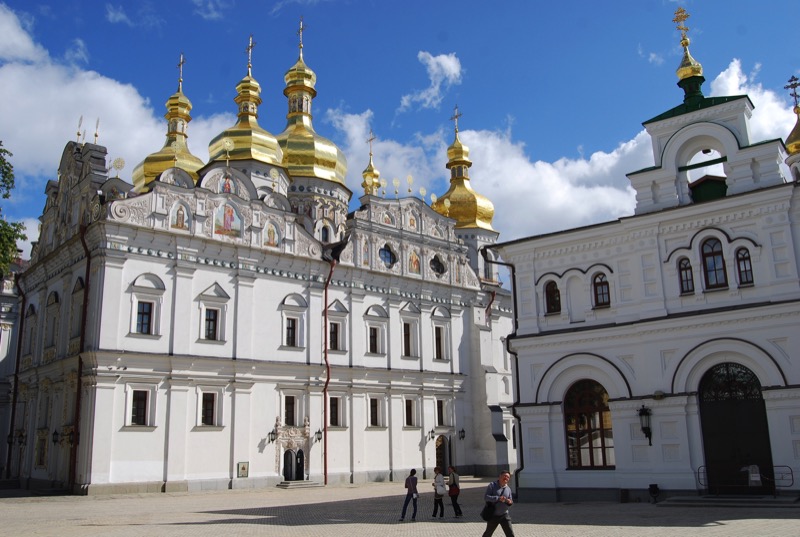
The complex, built on nearly 70 acres of grassy hills overlooking the Dnipro River, encompasses several ornate gold-domed churches, as well as one of the largest museum collections in the city. Be sure to explore the underground catacombs where the bodies of mummified monks still remain behind glass-encased tombs.
(click image to view larger photo)
Also on the monastery grounds is Kyiv’s second great Byzantine church, the Dormition, or Ascension, Cathedral. Built from 1073 to 1089, the Dormition Cathedral was the model for the early 12th century churches of Russia’s Golden Ring towns.
Sample Kiev’s Soviet Era Sights
While Kyiv is known for its medieval monasteries and splendid baroque buildings, numerous old Soviet relics can still be seen that have been woven into the city’s cosmopolitan fabric.
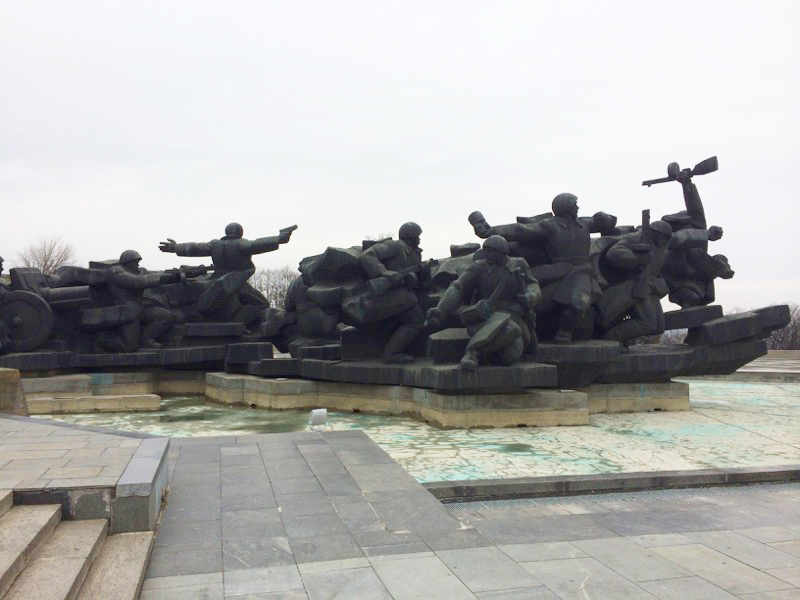
Overlooking the Dnipro near the Monastery of the Caves is the 330-foot stainless steel Rodyna Mat, the “Nation’s Mother” statue, holding aloft a sword and shield. One of the last Nation’s Mother monuments to be erected in the Soviet Union, the Rodyna Mat was inaugurated in 1981 by Soviet leader Leonid Brezhnev a year before he died. An elevator can take visitors to the top of the statue’s shield for impressive views of the Kyiv skyline.
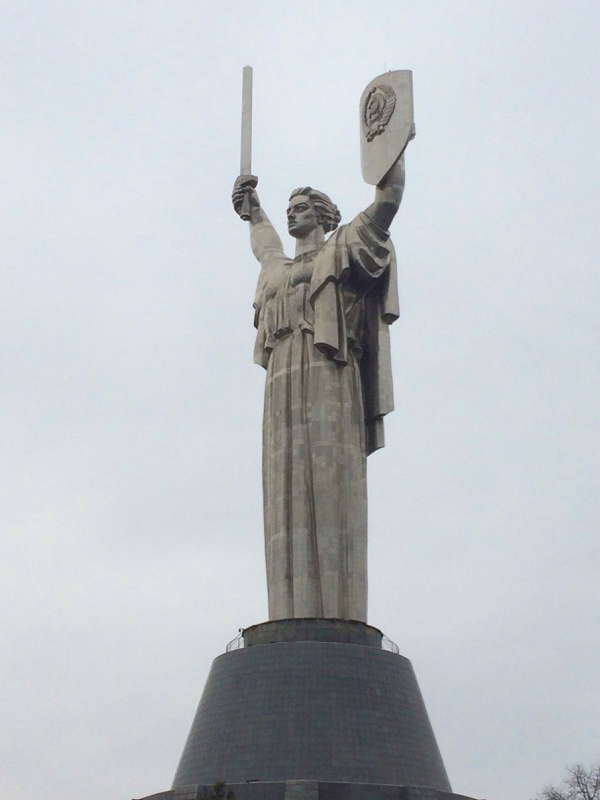
The 35-acre park where the Rodina Mat can be found is part of a memorial to those who fought in WWII. The complex includes an open-air museum of tanks, artillery, and helicopters; a flower-scattered Eternal Flame; and an indoor National Museum of the History of Ukraine in the Second World War. The complex changed its name in 2015 when parliament outlawed the Soviet term “Great Patriotic War.”
(click image to view larger photo)
Binge Out at the Bustling Bessarabsky Market
Those traveling throughout Ukraine soon come to discover that its people are passionate about good food. For some of the best culinary goods in town, Kyivan chefs and foodies head to the Bessarabsky Market, which has stood in the same spot since 1912.
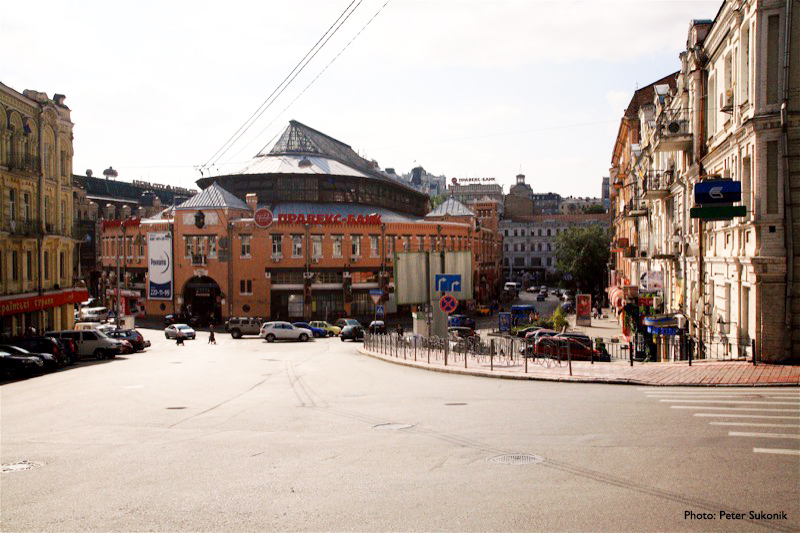
Named for the Bessarabian merchants who once lived and worked in this part of town, this massive indoor market is filled with stands bursting with colorful fresh produce, local meats and cheeses, caviar, and jar upon jar of pickles and preserves. Vendors are happy to hand out samples, and you can also find a variety of stalls selling classic Ukrainian dishes like borscht and varenyky.
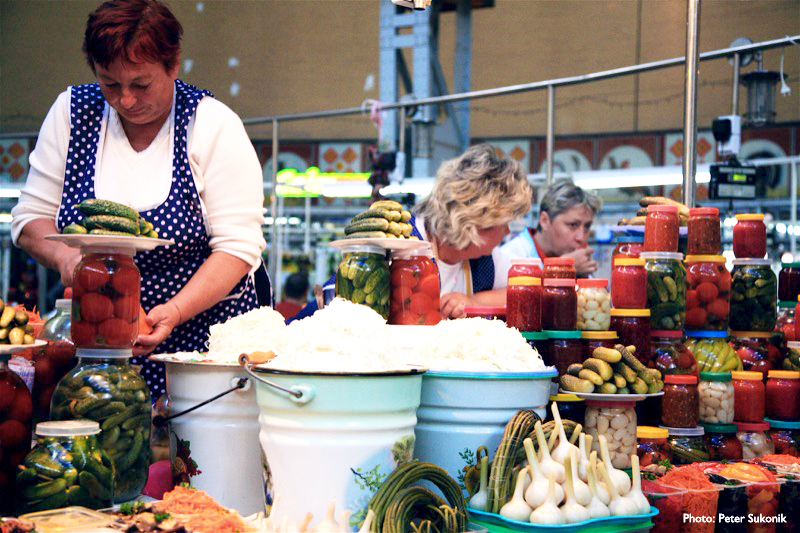
Pay Your Respects at the Chernobyl Museum
Kyiv’s sobering Chernobyl Museum explains the combination of human error and design flaws responsible for the 1986 explosion and fire at Chernobyl’s Reactor #4, only 62 miles from Kyiv. The reactor, put into commission only three years before, exploded and burned during a shutdown, blowing tons of radioactive material into the atmosphere.
(click image to view larger photo)
The interactive exhibits at the museum offer a modern recreation of the events of that day, and show the path of the radiation and the mass evacuations that eventually relocated over 300,000 people from Ukraine to various parts of the former Soviet Union. The nuclear accident and its subsequent cover-up marked the beginning of the dissolution of the Soviet Union.
Learn the Intricate Art of Ukrainian Egg-Painting
Groups of 10 or more can take the opportunity to learn traditional Ukrainian egg-painting, or pysanka. Literally translated as “egg-writing,” this traditional craft has been elevated to an art in Ukraine. Each pattern has a different meaning, some of them dating back to pagan times.
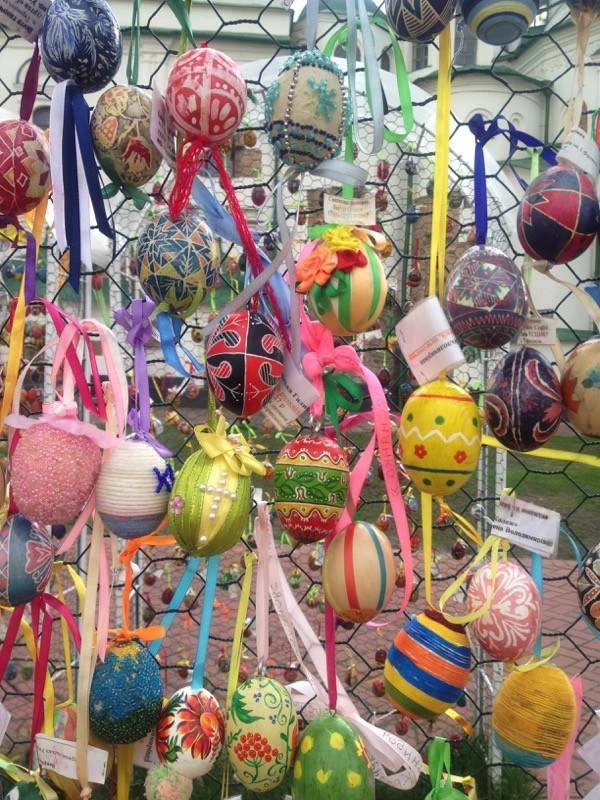
During the class, an artist will lead you step-by-step through drawing the pattern, coating the egg in hot wax, and dipping it in an array of brilliant dyes to create a vivid, multi-colored pattern. Come away with your own decorated egg.

Discover the Decadence of Yanukovych’s Mansion
About 9 miles outside of Kyiv is one of the city’s newest tourist attractions, Mezhyhirya, the former private estate of ex-president Viktor Yanukovych. Set on more than 340 acres of land and costing millions of dollars to create, the luxurious compound gives visitors a peek into the lavish lifestyle of the ousted Ukrainian leader.
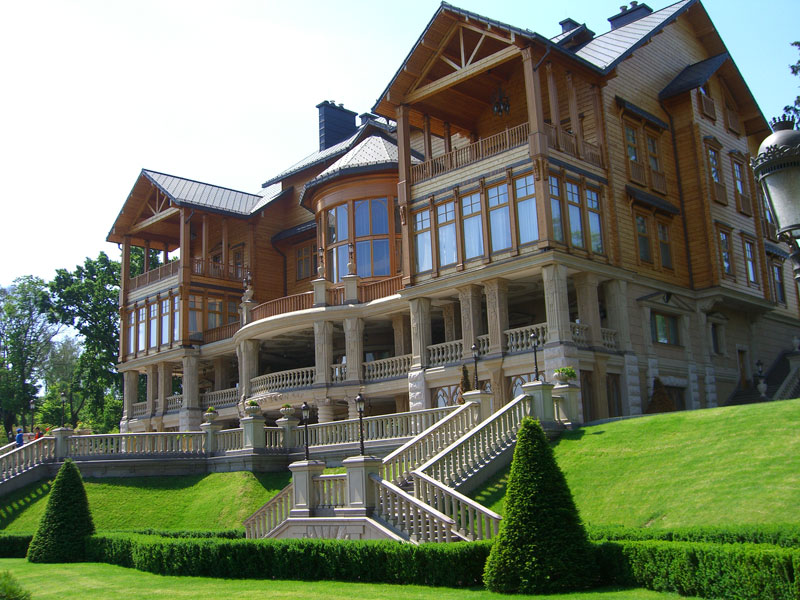
Mezhyhirya is centered around Yanukovych’s personal residence, known as the “Honka.” The four-story mansion is extravagantly decorated with wood paneling, gilded fixtures, and crystal chandeliers, and showcases some of the ex-president’s most decadent items including gold-plated monogrammed golf clubs, personalized bottles of brandy, and a replica of the piano used in the music video for John Lennon’s “Imagine.”
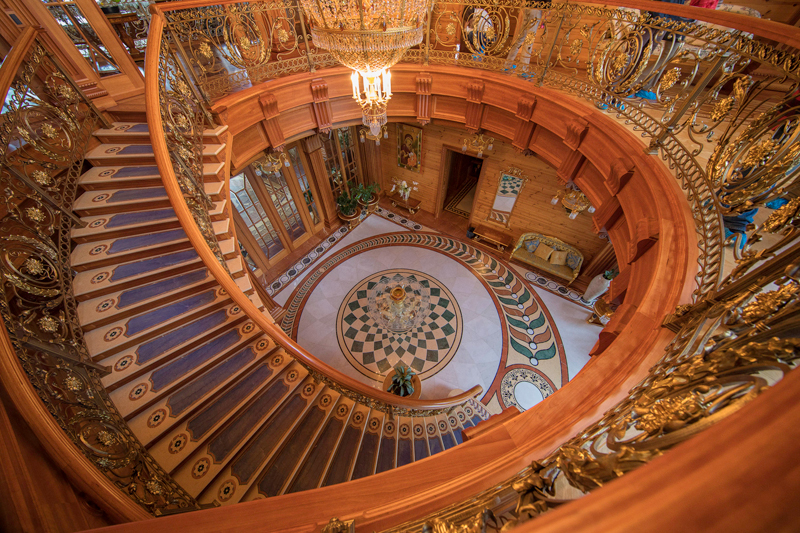
The compound also houses a private zoo, 3D movie theater, a rare-breed dog kennel, private golf course, a classic car and motorcycle collection, and a full-size galleon floating on a man-made lake, which doubled as Yanukovych’s own private restaurant. Many of those living in a country with a per capita income of approximately $8,300 take a dim view of these excesses.
(click image to view larger photo)

Travel with MIR to Ukraine
MIR has more than 30 years of travel experience in Ukraine. We have a roster of contacts that can take you to places that you didn’t even know you wanted to go. Our full service, dedication, commitment to quality, and destination expertise have twice earned us a place on National Geographic Adventure’s list of “Best Adventure Travel Companies on Earth.”
Experience cosmopolitan Kyiv and Ukraine on MIR’s small group tour Belarus, Ukraine & Moldova, or on the private itinerary Essential Ukraine. You can also create your own independent Ukrainian exploration with the help of our custom and private specialists.

